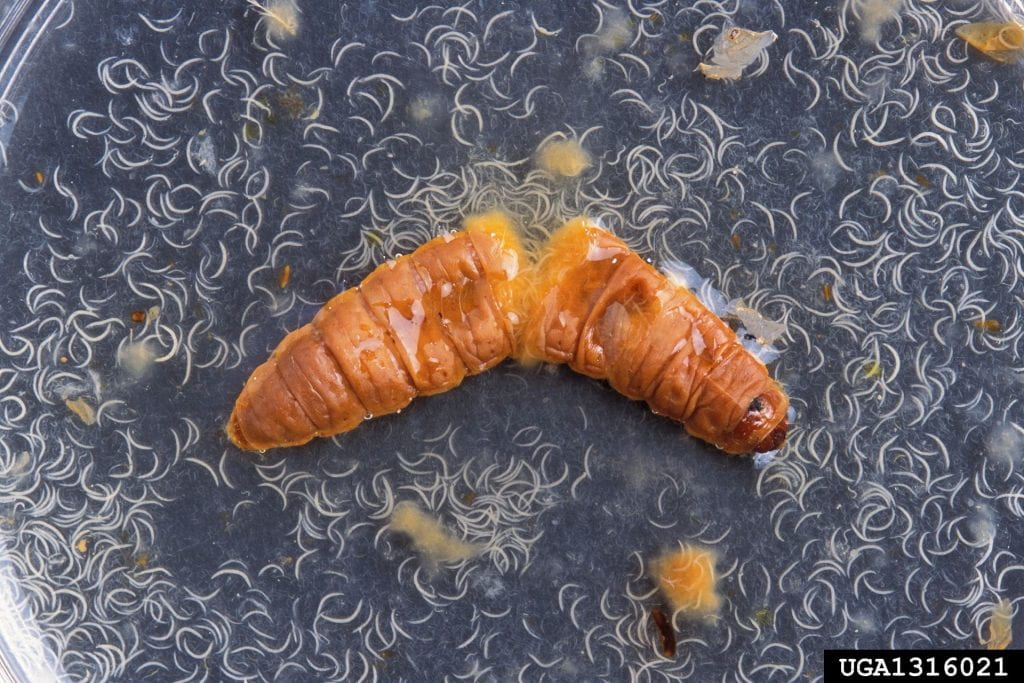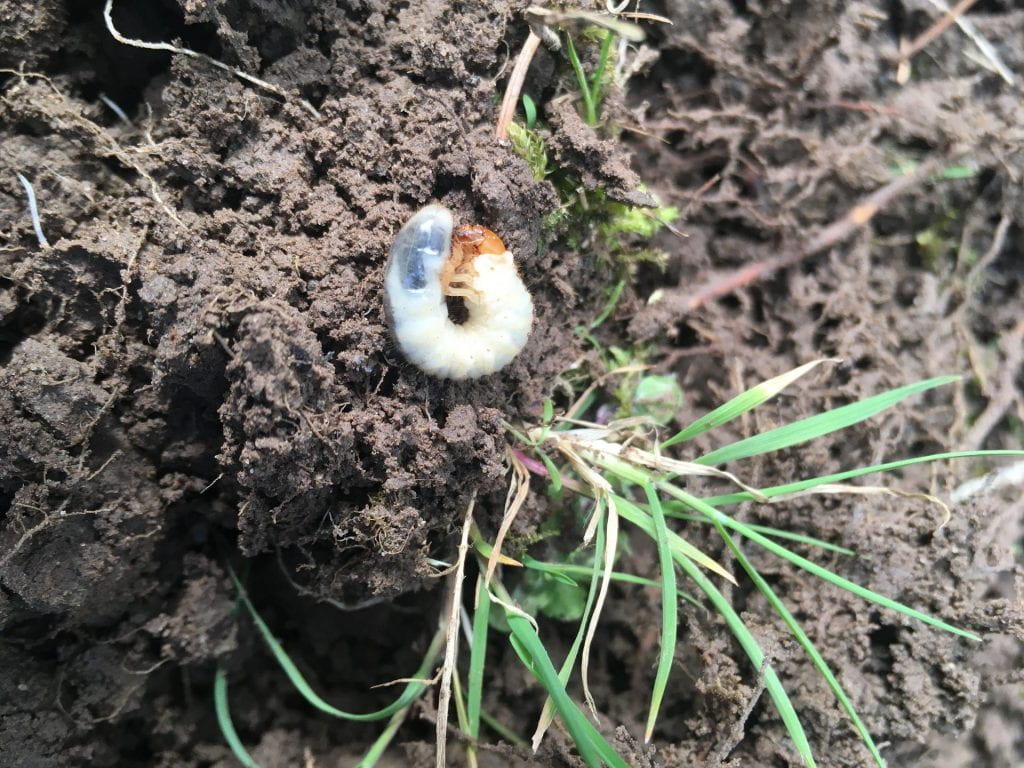
Nematodes are tiny worms. While some of them can damage plants, some prefer to eat insects, and these “good worms” (entomopathogenic nematodes is the technical term, but we can call them EPNs for short) can be helpful biocontrol agents. Teresa Rusinek (Cornell Cooperative Extension eastern NY Commercial Horticulture Program) wrote a guest blog post about her work testing EPNs for control of wireworms in sweet potatoes. Elson Shields (Cornell Entomology) has spent many years perfecting the use of persistent EPNs that are native to New York in agricultural fields where they control insect pests. Kyle Wickings is my go-to expert on using EPNs to manage white grubs in turf. A former graduate student in Kyle’s lab (Max Helmberger) made an amazing video describing the life cycle of EPNs. John Sanderson is the Cornell guru of greenhouse biocontrol (including EPNs for greenhouse insect pests).
So many people have developed so many great materials on EPNs, the purpose of this post is to point you to some of these great resources. Why re-invent the wheel? And if I’ve missed something, please let me know!
John Sanderson (Cornell University) has done some great work evaluating different EPN species for controlling insect pests in greenhouses. You can watch a webinar summarizing this work here.
Carol Glenister (IPM Laboratories) and Elson Shields (Cornell University) did a presentation on “Getting the Most Out of Beneficial Nematodes in Organic Production” for the UMass Amherst Extension Vegetable Program. You can watch the recording on YouTube, and you can read their answers to frequently asked questions online.

Need help identifying your white grubs (a critical first step to using EPNs effectively in your lawn)? Kyle Wickings developed a simple key.
Are you concerned about grub damage in your home lawn? Put back that pesticide bottle, and start by scouting and identifying grubs, then apply some EPNs (only if you need them). You can find all the details here.

If you are growing alfalfa, Elson Shield’s lab has all the information you need to successfully use EPNs to control alfalfa snout beetles, starting with an overview, and including detailed resources to help you be successful.
Wondering if EPNs can help you control fruit and vegetable insect pests? In consultation with my colleagues, I developed a summary of what we know about which fruit, vegetable, and ornamental pests you are likely to be able to manage with EPNs. More research is ongoing, so this list will continue to evolve.
This work is supported by NYS Departments of Environmental Conservation and Agriculture and Markets.
This post was written by Amara Dunn, Biocontrol Specialist with the NYSIPM program, but was only possible due to the great work done by colleagues. All images are Amara’s, unless otherwise noted.
